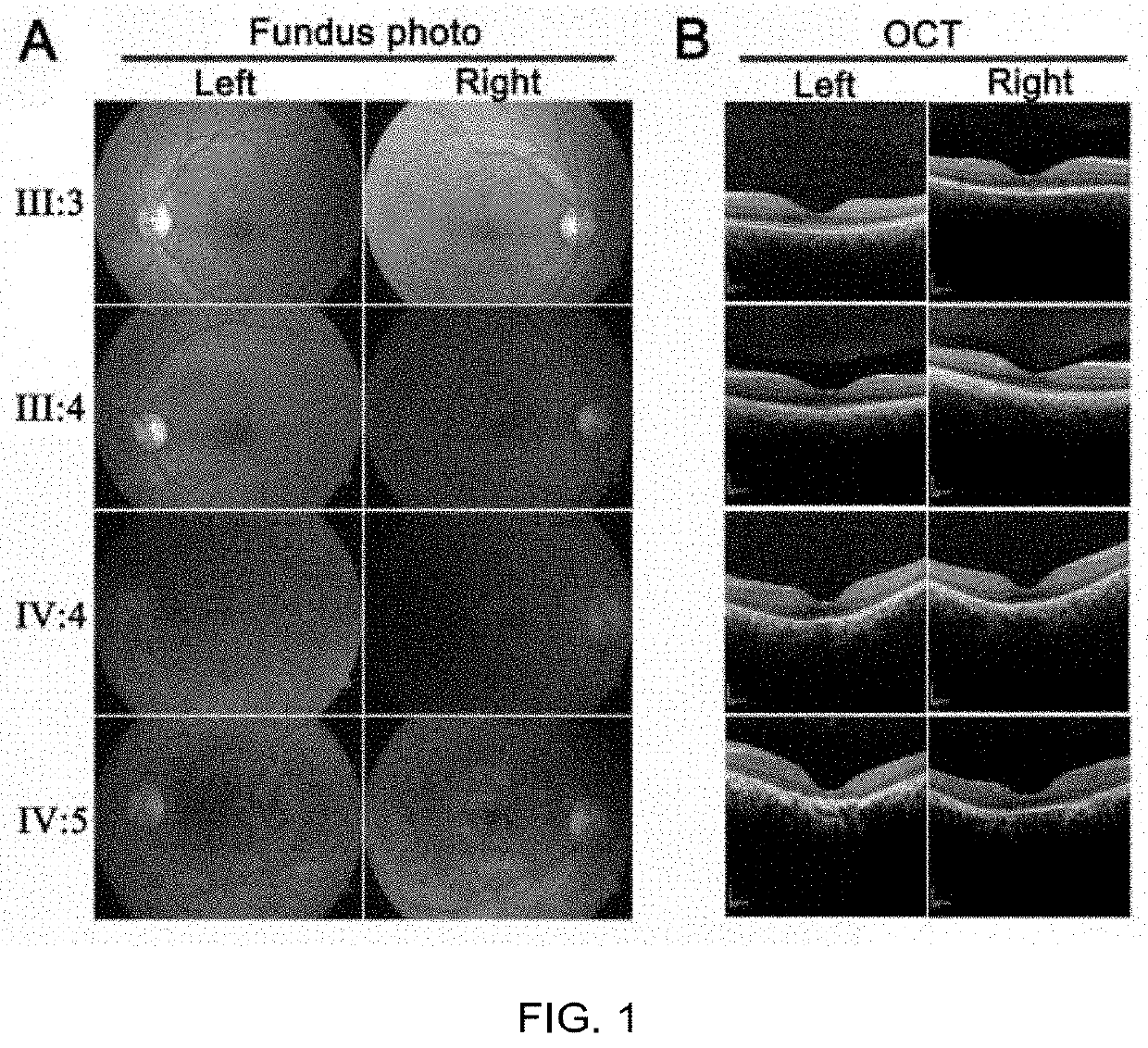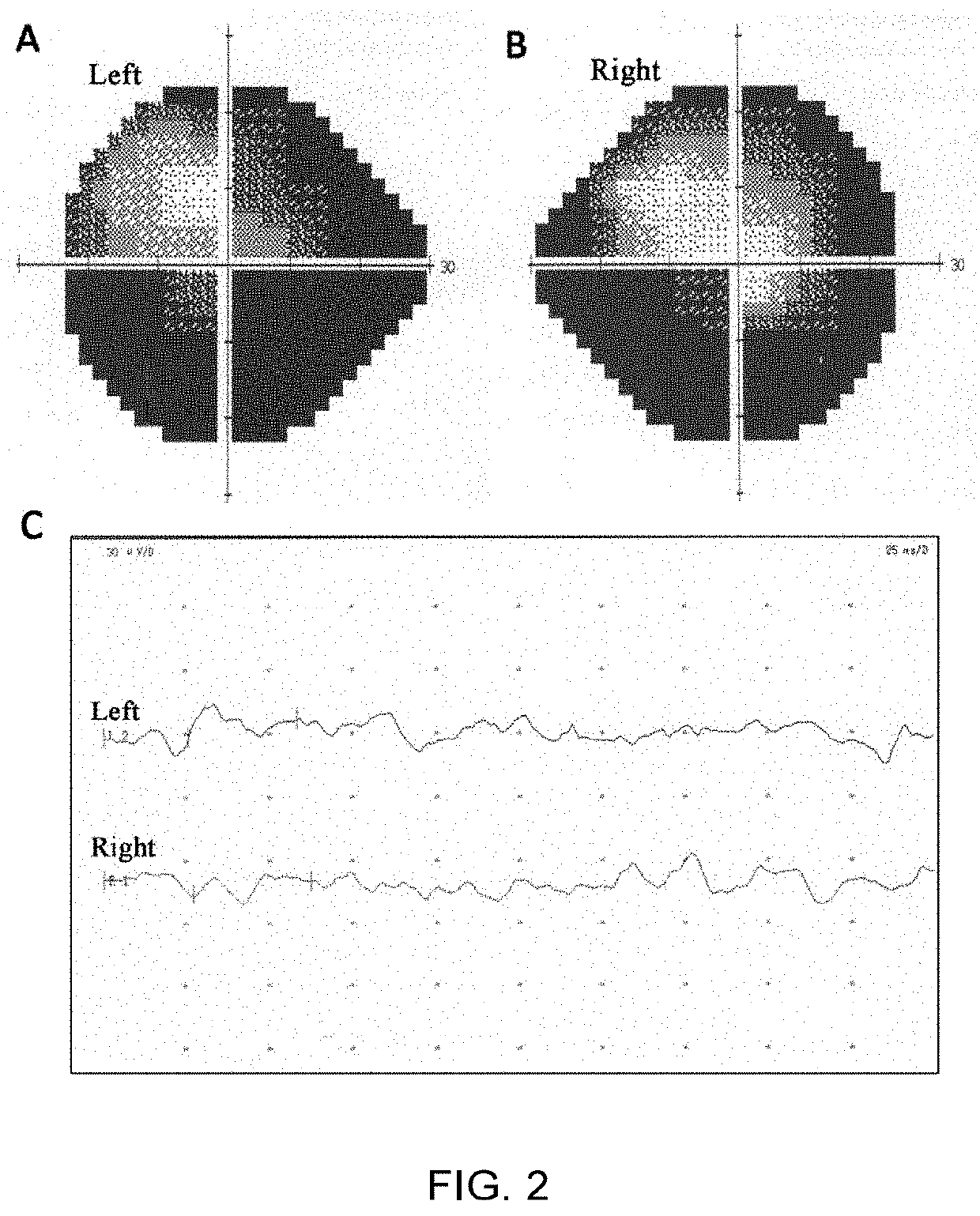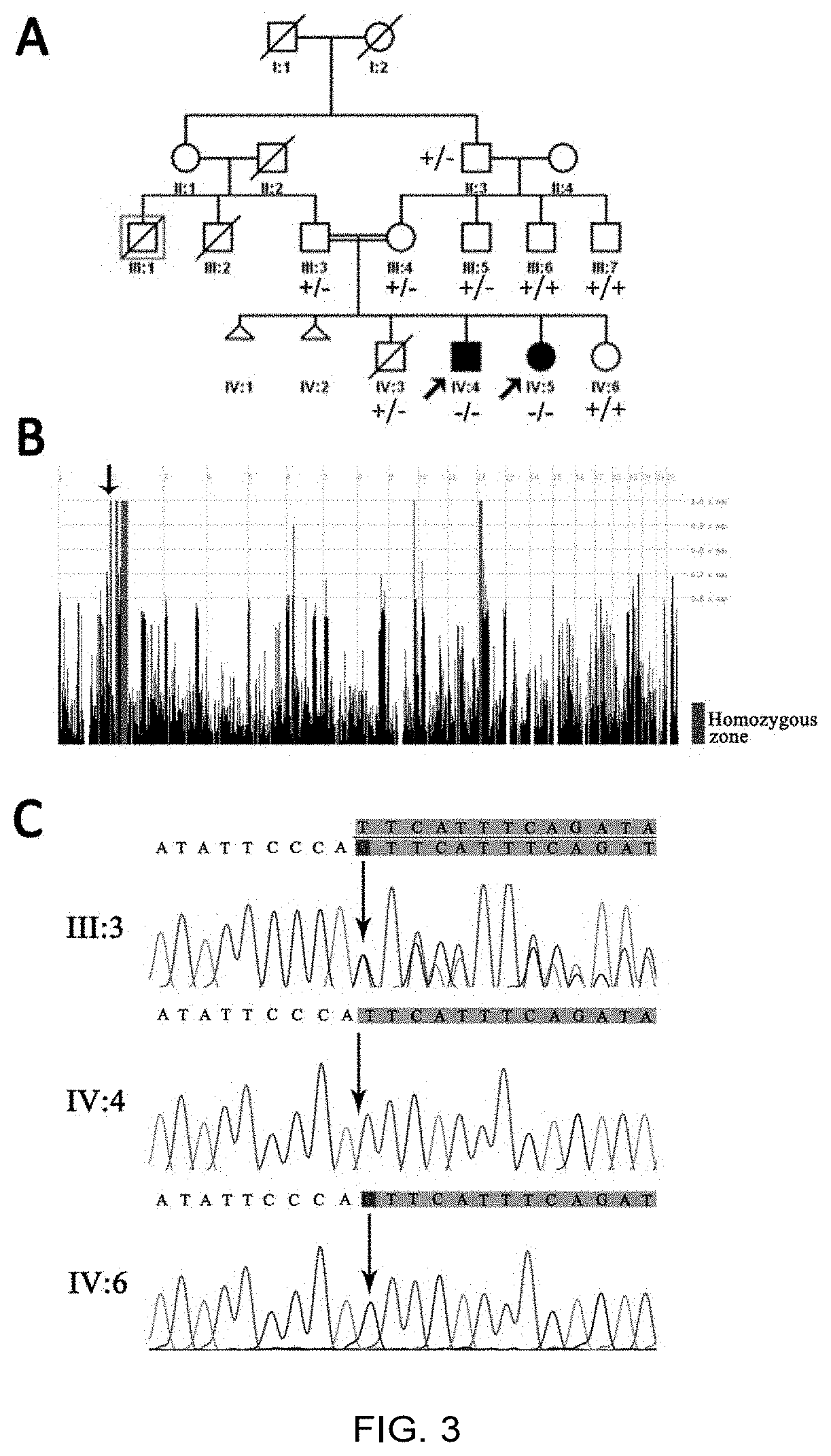Use of ZNF124 Gene in Early Screening or Auxiliary Diagnosis of Retinitis Pigmentosa Disease
a technology of retinitis pigmentosa and znf124, which is applied in the field of gene detection, can solve the problem of complex pathogenesis of rp
- Summary
- Abstract
- Description
- Claims
- Application Information
AI Technical Summary
Benefits of technology
Problems solved by technology
Method used
Image
Examples
example 1
[0097]Family Analysis and Discovery of ZNF124 Mutation
[0098]Among the collected RP families, the RP074 family is a Han ethnic family in southwest of China with autosomal recessive retinitis pigmentosa, and has 13 people of 3 generations, and 2 people have RP in total. The clinical examination showed that the proband patients IV:4 and IV:5 of the RP074 family had weak night vision from the age of 15, and gradually developed to night blindness with impaired peripheral visual field. Fundus examination revealed that the papilla of optic nerve atrophied in both eyes of the patients, and revealed retinal artery vascular stenosis and retinal pigmentation (A in FIG. 1); optical coherence tomography (OCT) of retina showed that the patient's retinal neuroepithelial layer became thinner, with the outer nuclear layer being the most obvious; the reflection of the connection layer of the inner and outer segments of the photoreceptor disappeared, and part thereof was discontinuous; the pigment epi...
example 2
[0100]Further data analysis was conducted to the collected whole-exon-sequencing RP samples in which known gene mutations were not detected, and it was found that another autosomal recessive RP family RP131 carried the ZNF124 mutation. RP131 was a Han RP family in northern China (A in FIG. 4). The proband carried a homozygous mutation of the ZNF124 (B in FIG. 4), and his parents were heterozygous carriers. The proband was a male patient with night blindness at the age of about 20 and progressive visual field atrophy.
[0101]This mutation site was not detected in dbSNP database, 1000 Genomes, NHLBI Exome Sequencing Project (ESP), the ExAC Browser (Beta), gnomAD database, and was a rare mutation. The mutation was not detected in 3000 healthy control samples. This splicing mutation led to the base deletion of the encoding region after the 73rd codon, resulting in a frameshift mutation; and the mutant ZNF124 protein only retained the N-terminal KRAB-A box domain, and these data indicated ...
example 3
[0102]In order to detect the influence of the deletion mutation (NM_003431:exon4:c.219-1G>-) on the transcription and translation of ZNF124 protein, the peripheral blood RNA of the RP074 proband and their parents was extracted and reversely transcribed into cDNA, the method was as follows:
[0103](a) peripheral blood leukocytes were separated and placed in a 1.5 ml centrifuge tube, 1 ml Trizol extracting solution was added, and the resultant was left at room temperature for 20 minutes;
[0104](b) 200 μl chloroform was added and mixed fully, and the resultant was left undisturbed at room temperature for 10 minutes;
[0105](c) the sample was placed in a 4-degree centrifuge and centrifuged at 10,000 rpm for 15 minutes;
[0106](d) the supernatant was carefully aspirated, an equal volume of isopropanol was added and mixed fully, and the resultant was centrifuged at 10,000 rpm to precipitate RNA;
[0107](e) the precipitated total RNA with 75% ethanol was washed, the resultant was centrifuged and pr...
PUM
 Login to View More
Login to View More Abstract
Description
Claims
Application Information
 Login to View More
Login to View More - R&D Engineer
- R&D Manager
- IP Professional
- Industry Leading Data Capabilities
- Powerful AI technology
- Patent DNA Extraction
Browse by: Latest US Patents, China's latest patents, Technical Efficacy Thesaurus, Application Domain, Technology Topic, Popular Technical Reports.
© 2024 PatSnap. All rights reserved.Legal|Privacy policy|Modern Slavery Act Transparency Statement|Sitemap|About US| Contact US: help@patsnap.com










